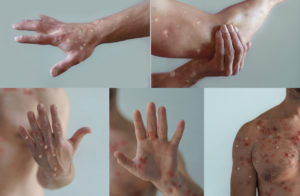Hi #GYNEGirls, #Preggos, & #GENTs! It’s ME again Dr. Drai- your FAV OBGYN. Hunni I’ve been busy filming more “Medical T” (TIPs) videos- 5 to be exact. All for my gurls of course. They are F-U-N-N-Y. Even I crack up when watching them. Be on the lookout #GYNEGirls; Dr. Drai will be releasing them SOON. YEA!!! As always Dr. Drai STILL has been busy WERKing IT in the office chile. You know Dr. Drai has been traveling the country taking care of women in need. He may be in a city near you. Keep watching… I did slow down on doing media interviews for the holidays. I had a HORRIBLE “BUG” which meant my body was telling me to SLOW the hell down. Dr. Drai listened AND I’m ALL better now. Dr. Drai wanted to personally start this year out by saying THANK YOU THANK you thank you. You ladies (and fellas) have been supporting me since the beginning…Started from the bottom NOW we here started from the bottom NOW my whole teams here. LOL! DrDrai.com has been here for 2 1/2 years. WOW! Now let’s get to the EDUCATIONAL purpose of this blog post. WINK! You know I’m a teacher at heart. DOCTOR means “To TEACH” in Latin.
January is a special month; It’s Cervical Cancer Awareness month. The cervix is the lower, narrow end of the uterus. The cervix connects the vagina to the upper part of the uterus. Before the PAP smear was invented #GYNEGirls, cervical cancer was the most common gynecologic cancer in the world. Currently, there are about 12,000 new cases of cervical cancer each year AND about 4,000 women will die each year. These stats make me sad #GYNEGirls. The worst part is that the average age of diagnosis is only 42 years old. That is too young to worry about dying. In the United States, Hispanic women are most likely to get cervical cancer, followed by African-Americans, Asians and Pacific Islanders, and whites. American Indians and Alaskan natives have the lowest risk of cervical cancer in this country. Read below to learn 7 facts that you definitely need to know about cervical cancer. Maybe this post will save a life…Keep reading!
- You can get cervical cancer from a STI. Have you heard of the Human Papilloma Virus (HPV)? HPV is the most common sexually transmitted infection. It is the main cause of cervical cancer. Ladies-when a raw penis that is infected with HPV touches your cervix, you will contract this virus. Fellas- this goes for you too. If a cervix has HPV on it and you touch it with your raw penis, you will contract the virus. #GYNEGirls- please have safe sex i.e. use condoms always!
- The HPV vaccine protects you against cervical cancer. First of all there are MANY different types of HPV; some cause cancer while other types don’t. There are three vaccines on the market- Gardasil, Gardasil 9, and Cervirax. These vaccines target the cancer-causing HPV in your body. Gardasil is for both #GYNEGirls and #GENTs, while Cervirax is only for #GYNEGirls. These vaccines also can be given to girls as young as 9 years of age. Gardasil 9 protects against HPV types 6, 11, 16, 18, 31, 33, 45, 52, and 58. Gardasil protects against HPV types 6, 11, 16, and 18. Cervarix protects women and girls against HPV types 16 and 18. Get vaccinated ladies! Dr. Drai did.
- A PAP smear is our best screening tool. Screening just means a way to see if you are at risk. Our guidelines have changed drastically #GYNEGirls. Check out my post called PAP Smear Problems for a full update. At age 21, doctors start performing PAP smears.
- Ages 21-29: Cytology alone every 3 years
- Ages 30-65: Cytology alone every 3 years OR Cytology and HPV cotesting every 5 years
- Age > 65: Discontinue performing PAP smears if she has had 3 or more consecutive normal smears in the preceding 10 years
- Women who have had TOTAL hysterectomies for benign disease: Discontinue performing PAP smears
- Women with a history of CIN 2, CIN 3 or adenocarcinoma in situ should continue routine age-based screening for at least 20 years.
- A Colposcopy is done if your PAP Smear is abnormal. Colposcopy is a fancy word for looking at your cervix through a long microscope; it’s a more definite way to see if you have cervical cancer especially if a biopsy (piece) of the cervix was done. Let me just say this; Just because you have to have a “Colpo” DOESN’T mean you have cancer. RELAX!
- Early stage cervical cancer has no symptoms; late stage symptoms include vaginal bleeding after sex, vaginal discharge, and back pain. That’s why it’s so important to get your PAP smear, get vaccinated, and have safe sex.
- Having sex at an early age, having HIV, smoking cigarettes, having given birth to 3 or more kids, taking birth control pills for more than 5 years, or having multiple sexual partners increases your risk of getting cervical cancer. Talk to your daughters (AND SONS).
- If you are diagnosed with cervical cancer, a gynecologic oncologist will work with you to create a treatment plan. These doctors have been trained to treat cancers of the female reproductive tract. The treatment of cervical cancer ranges from a LEEP (removing part of the cervix), radical hysterectomy, &/or chemotherapy/radiation.
Basically #GYNEGirls, #Preggos, & #GENTs cervical cancer is PREVENTABLE. You need to keep up with your appointments to get your PAP smear, get vaccinated with the HPV vaccine, use condoms always, and stop smoking. I hope you have learned something. Share this post with a friend. #TealsTheDeal. Until next time…
[#GYNEGirls]





